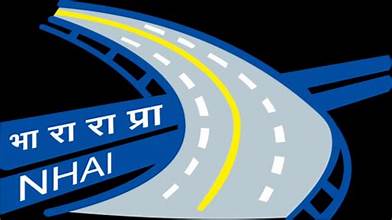The National Highways Authority of India (NHAI) has requested the Supreme Court to allow the cutting of more than 800 trees in the Taj Trapezium Zone (TTZ) for the development of a six-lane, access-controlled highway between Agra and Gwalior.
The Bench led by Justice Abhay S Oka on Monday directed the Central Empowered Committee (CEC), which has been helping the Court in environment-related cases involving projects within forest areas, to examine the highway proposal.
The Apex Court has been supervising industrial work around the world heritage site Taj Mahal since 1996. It designated 10,400 sq km of land around the protected monument as TTZ.
NHAI filed two applications before a special Supreme Court Bench monitoring development activity in the TTZ area seeking permission to cut the trees on the grounds that the proposed highway would improve connectivity between Gwalior and Agra via Dholpur and Morena.
The pleas said the greenfield highway would improve road safety along the existing link between Agra and Gwalior – National Highway 44, while helping to save travel time, fuel and transportation costs.
The proposal was approved by both the Central government and the Union Ministry of Environment of Forest (MoEF) after being presented with detailed Environment Impact Assessment reports, they added.
NHAI assured that it would follow the conditions imposed by the Ministry to minimise the ancillary effects of construction to preserve the environment and fulfil the endeavours directed towards sustainable development.
The highways development agency further submitted documents in its application, which said the proposed highway would start from village Deori in Agra and end near Susera village in Gwalior. It would traverse four districts in three states — Agra in Uttar Pradesh, Dholpur in Rajasthan, and Morena & Gwalior in Madhya Pradesh.
The petitions contended that the project would incur an estimated cost of more than Rs 2,497 crore. The highway would require more than 504 hectares of private, agricultural and forest land, including the diversion of 2.82 hectares of reserved forest area in the National Chambal Sanctuary in the Morena district.
The 88.5-kilometre-long proposed highway would feature eight major and six minor bridges, six flyovers, one road-over bridge above a railway line, several underpasses, and box crossings. More than 19 km of the highway will fall in the TTZ area.
NHAI finalised the proposed alignment after finding it the most feasible and beneficial compared to alternative routes, they added.
The petitions further submitted that NHAI explored the expansion of the current NH-44 from a four-lane to either a six or eight-lane highway, shelved it later as the proposal would lead to dismantling & rehabilitation in the existing built-up areas and urban centres. The environmental impact was also significantly higher and the relative land acquisition cost was higher, they added.
The government agency contended that the new greenfield six-lane corridor connecting Agra to Gwalior was conceptualised and proposed with the objective of decongesting the existing Agra-Gwalior section of NH-44. Once developed, it woul lead to better inter-state connectivity thus, helping in better freight volume and movement pattern on the highway.
It highlighted the benefits of the corridor, saying the fast and smooth movement of traffic would bring down accident rates and vehicular pollution levels, boosting local agriculture & enabling farmers to realise better value for their produce.


